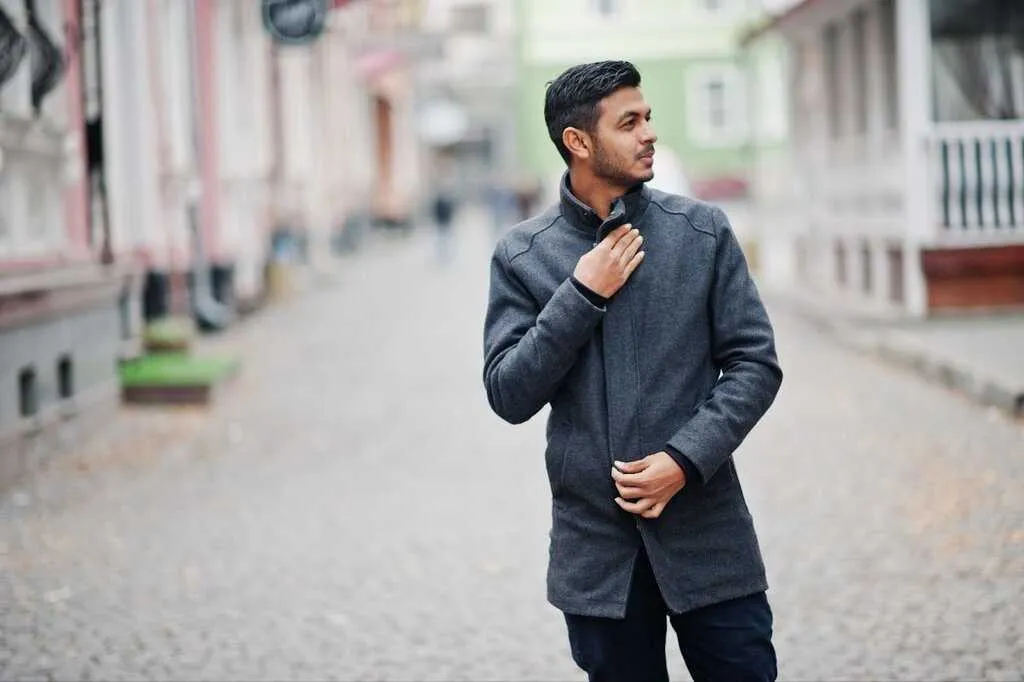Channel your inner Vogue and Confidence!

Key Takeaways:
You know the feeling. You finally find a winter coat that looks good, fits well and feels right—only to watch it unravel halfway through the season. Maybe the lining tears, or the fabric pills after a few wears. Worse, it starts losing shape and warmth before the cold even lets up. It’s frustrating, and it’s happening more often.
With so much outerwear made to hit price points rather than meet weather demands, it’s easy to end up with a coat that barely lasts through one winter, let alone several. But it doesn’t have to be that way. A coat that survives more than a single season doesn’t need to be expensive, just better made. And if you know what to look for, you can spot quality long before it shows up in wear and tear.
Most coats look good on the rack, but how they hold up in the real world depends on the fabric. It’s tempting to go straight for style, especially when you’re shopping in early winter and want something that feels current. But the truth is, materials matter more than design when you’re thinking long-term.
Wool remains a standout for warmth and longevity. Pure wool, especially in heavier weights, handles the daily grind better than blends. It resists wrinkles, retains shape, and wears in—not out. Cashmere adds softness, but on its own, it’s less robust. Look for coats that combine it with wool to get the best of both worlds. On the synthetic side, technical fabrics like nylon or polyester blends can offer water resistance and windproofing, but quality varies widely. Some coatings flake after a season; others stay strong for years.
What often separates a long-lasting coat from a seasonal throwaway isn’t visible at first glance. Cheaper blends may feel smooth or look structured, but over time, they’re more likely to stretch, fray or thin in high-friction areas. A good habit is to feel the fabric with your hands. Is it dense? Is the weave tight? Does it spring back when crumpled? These small checks reveal a lot more than the price tag.
Once the material checks out, construction is the next big thing. Even high-end fabric falls flat if the coat is poorly made. The fastest way to spot a short-lived coat is to look at the seams. Loose threads, uneven stitching, or seams that shift when gently tugged all suggest cut corners.
Double stitching along stress points like shoulders, armholes and pockets helps the coat stay intact through everyday use. Lining matters too. A well-constructed lining not only keeps you warm but also helps the coat move better on your body and protects the outer fabric from sweat and wear. Poor-quality linings often tear first—and once that goes, the coat becomes unwearable, no matter how good it looks on the outside.
Closures are another giveaway. Zippers should glide smoothly and feel solid, not flimsy. Buttons should be tightly sewn and ideally reinforced from the inside. If they’re already loose when you try it on, that’s a red flag. Structured tailoring is a bonus—it means the coat is shaped to hold its form rather than relying solely on the fabric.
You’ll also notice that coats with better internal build often just feel more balanced when worn. They drape evenly, they don’t pull in weird directions, and the shoulders sit properly without needing constant adjustment. These details don’t just look better—they age better, too.
Fit isn’t just about how a coat feels in the store. It’s about how it continues to serve you as seasons, trends and layers shift. A coat that fits perfectly over a single outfit but tightens uncomfortably over a jumper the moment it gets cold isn’t doing its job. The best fit offers a bit of room without drowning your frame, and allows you to dress for changing conditions.
Trend-focused fits often look good in the moment but tend to age quickly. Oversized shoulders or cropped lengths might feel stylish now, but they can box you into a very specific look that doesn’t carry well into next year—or even next month. That’s where a more classic cut becomes a quiet advantage. Something structured but not stiff, tailored without being tight, tends to last longer because it adapts. Not just to your style, but to your life.
Arm and shoulder movement matters more than people realise. If a coat pulls when you reach forward or rides up at the back when you sit, it’s not designed to move with you. These small discomforts become daily annoyances, and eventually, that coat gets left in the wardrobe. And if it’s not being worn, it’s not doing you any favours—no matter how good it looks on a hanger.
There’s a difference between coats designed for a market and coats made for a climate. Independent makers of mens coats Melbourne locals often favour heavier-duty fabrics and offer better construction than mass retailers. These pieces are usually built with real weather in mind—wet mornings, cold snaps, and all the unpredictable stretches in between.
When coats are designed locally, they tend to reflect actual usage rather than global trends. That might mean deeper pockets, more reliable closures, or lining choices that account for wind chill rather than just appearance. Local producers also tend to release smaller seasonal ranges, which often means more attention to detail in how each coat is put together.
Big-box retailers often aim for broad appeal, which usually means lighter builds and trend-driven shapes that don’t hold up in colder conditions. While they may get the job done short-term, it’s worth comparing them to coats you’ll find in smaller Melbourne stores or local menswear boutiques. The difference isn’t always obvious at first—but after a full winter of wear, it’s hard to miss.
And because local makers often rely on reputation and word-of-mouth rather than volume, there’s more incentive to make coats that actually last. When your product has to stand up to real weather and repeat customers, cutting corners becomes a bad bet.
It doesn’t take long for a coat to show its limits—if you know where to look. Weak buttons, thin linings, uneven hems, and zippers that stick or rattle are all early warning signs. You might miss them in the shop, but they often become daily frustrations after just a few wears.
One of the easiest ways to spot short-term construction is to inspect the inside. Look at how the lining is attached. If it sags, puckers or shifts as you move, it’s likely been stitched in quickly without much care. Likewise, a coat that feels light in the wrong way—like it lacks body or structure—is usually missing some key internal elements. Padding, interfacing and proper reinforcement can’t be seen but play a big role in how a coat wears and weathers.
Avoid coats that are overloaded with flashy details. Decorative elements like contrast stitching, novelty buttons or oversized logos might feel fresh in the moment, but they tend to go out of style fast and are often the first parts to break or detach. Quality coats rely on construction, not decoration, to make their point.
It’s also worth checking how the fabric behaves when lightly stretched or rubbed. If you notice pilling after a few swipes or a scratchy texture where the coat touches your skin, that’s a strong hint the material wasn’t made for long-term wear. These are the coats that look fine at first but start to fall apart before winter’s even done.
Even the best coat won’t last if it’s treated like an afterthought. How you care for it once it’s home can be the difference between a winter staple and something that ends up in donation bins by next year.
Storage is one of the most overlooked aspects. Coats need room to breathe, not just space in a crowded hallway hook. Using a wide, shaped hanger can help it keep its form, while storing it in a garment bag over the summer protects it from dust, moths and sun damage. If the coat comes with a care label, don’t ignore it. Wool and lined coats typically need dry cleaning, but not too often—excessive cleaning can wear down fibres faster than regular use.
Spot cleaning, brushing off lint, and hanging it to air after a long day all help extend the coat’s life. These simple habits mean the fabric stays cleaner, the structure holds better, and the coat always feels ready to wear. It’s less about preserving perfection and more about helping the coat age with you, not against you.
A winter coat doesn’t need to be an investment piece, but it should be something you rely on year after year. If it keeps you warm, fits well through different seasons, and looks just as sharp after a dozen wears as it did on day one, that’s a coat worth holding onto.
Looking for signs of quality isn’t just about avoiding disappointment. It’s about making smarter, more sustainable choices without overcomplicating things. The best coats aren’t always the flashiest or the most expensive. They’re the ones that quietly do the job, over and over again, no matter what the weather throws your way.

I am Mehmand Wali, an Author at Vogue Vocal and a skilled SEO Expert & Outreach Specialist.
My expertise lies in creating authentic, optimized content that drives visibility and engagement.
With strong experience in outreach, content strategy, and digital marketing, I work across industries.
At Vogue Vocal, I share professional insights that empower readers and businesses alike.